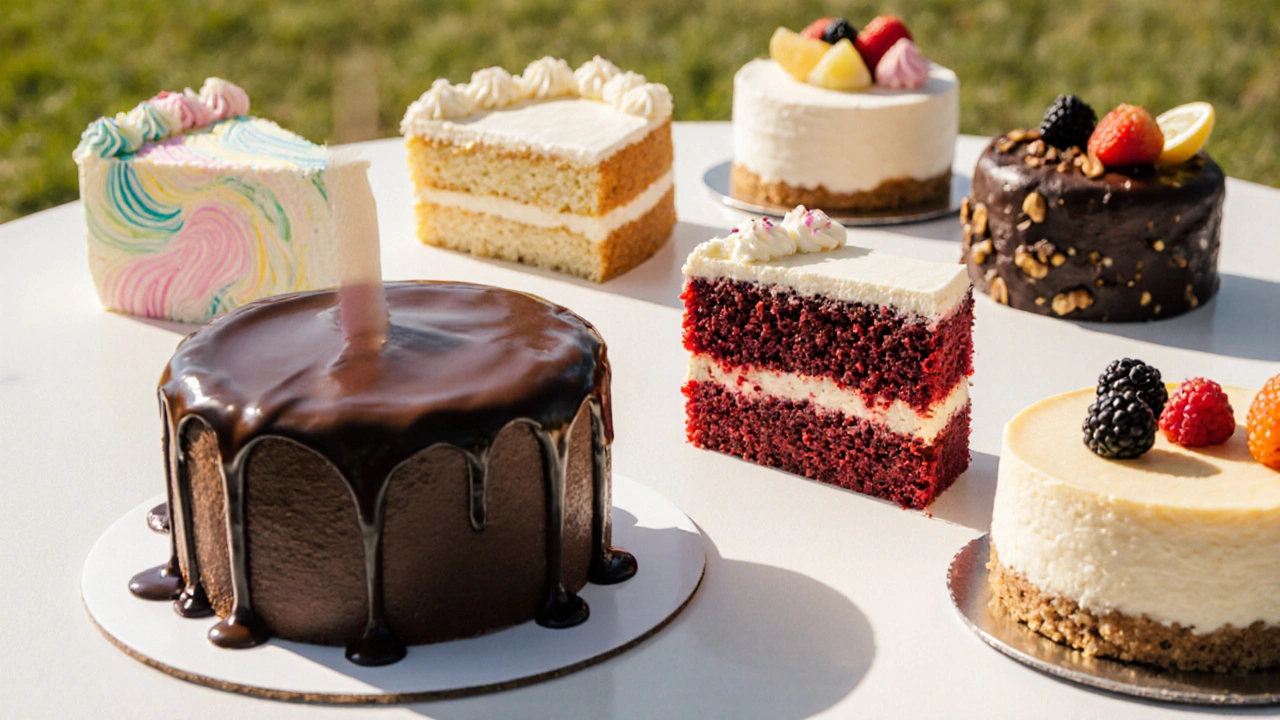
Which Cake Tastes the Best for a Birthday Celebration?
Discover the top birthday cakes, compare flavors, textures, and frosting to pick the most delicious cake for any celebration.
When you explore cake taste test, a systematic way to compare the flavor, texture and overall enjoyment of different cake recipes. Also known as cake flavor evaluation, it helps bakers decide which version wins the palate. To make it work you need a solid flavor profile, the mix of sweet, acidic, and aromatic notes that show up in each bite, a clear sense of texture, the crumb structure, moisture level and mouthfeel that define a cake’s body, the right ingredients, the quality of flour, sugar, fats and leaveners that shape flavor and crumb, and a consistent baking technique, the temperature, mixing method and cooling process that lock in the desired results. Together they form the core of any reliable cake taste test.
First, decide which cakes you want to compare. Choose recipes that differ in at least one variable—like using almond flour instead of all‑purpose, or swapping butter for oil. Once the cakes are baked, let them cool completely; warm slices can mask subtle differences in flavor and texture. Then cut uniform pieces, preferably the same size and shape, so each tasters gets an equal sample.
During the tasting, focus on the cake taste test steps: appearance, aroma, bite, and aftertaste. Appearance tells you about crumb color and surface finish—signs of proper baking temperature. Aroma reveals the balance of vanilla, citrus or spice notes, which often hinge on ingredient freshness. The bite is where texture shines; notice if the crumb feels airy, dense, dry, or moist. Finally, the aftertaste lets you detect lingering sweetness or bitterness, pointing back to sugar type or chocolate quality.
Recording observations is key. Use a simple scorecard with columns for each attribute and a line for each cake. Encouraging multiple tasters reduces personal bias and highlights consensus on which version truly excels. If you notice consistent comments—like “the crumb feels dry” or “the lemon zest is too subtle—you’ve identified a tweak to try next time.
Ingredient choice often drives the biggest flavor shifts. High‑quality vanilla extract, fresh fruits, or premium cocoa can turn a good cake into a great one. Swap out generic sugar for demerara or coconut sugar to add depth, but remember that each alternative also changes moisture content, affecting texture. Paying attention to these trade‑offs during the test helps you fine‑tune recipes without endless trial and error.
Baking technique is the hidden lever that ties flavor and texture together. A slightly lower oven temperature can yield a softer crumb, while a higher temperature creates a crispier crust. Over‑mixing batter introduces excess gluten, making the cake tougher, whereas gentle folding preserves air bubbles for a light texture. Even the cooling method matters; placing a cake on a wire rack prevents steam from sogging the bottom, preserving the intended crumb structure.
Safety and storage are often overlooked but matter for a fair test. Make sure each cake is stored under the same conditions—room temperature, sealed container, or refrigerated—so that freshness doesn’t skew results. If a cake contains dairy or eggs, note the shelf life and avoid samples that have passed their prime. Consistent handling ensures that the differences you taste truly come from recipe choices, not spoilage.
With the basics covered, you’re ready to dive into the articles below. They explore everything from perfect meringue tips to how to freeze mascarpone, giving you the tools to tweak ingredients, master techniques, and troubleshoot common issues. Whether you’re a beginner looking for simple swaps or a seasoned baker aiming for competition‑level precision, the collection will help you sharpen each step of your cake taste test.

Discover the top birthday cakes, compare flavors, textures, and frosting to pick the most delicious cake for any celebration.